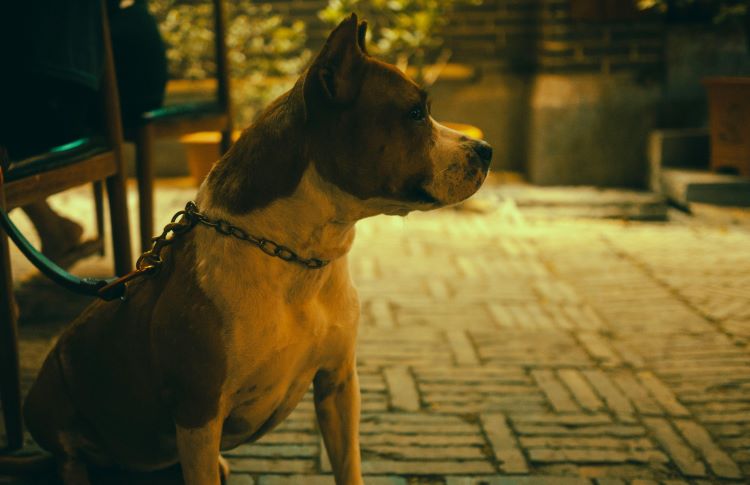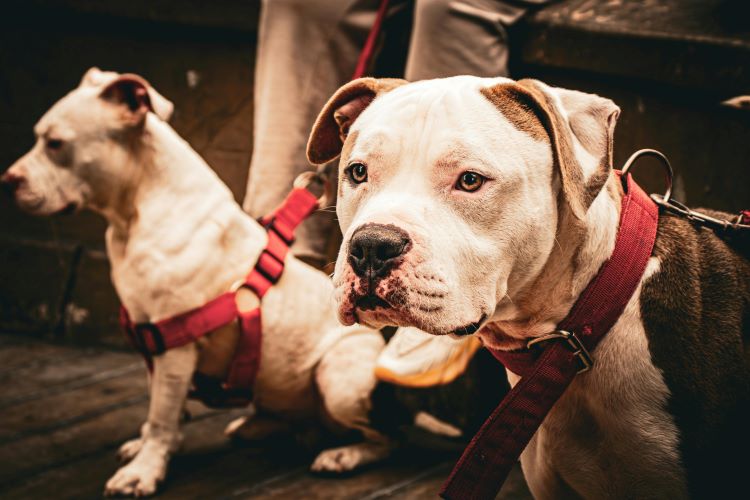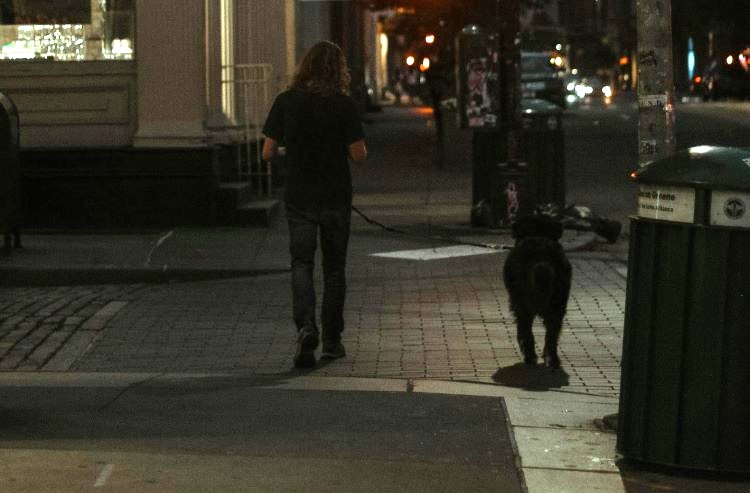Ready to help treat your pet to a healthy life?
Stay Safe While Walking Your Dog at Night
By : Brianna Gunter | Published Dec 17, 2024

As a responsible dog owner, you know your pet needs daily walks. Not only do these help solidify the human-pet bond, but they’re an easy way for your canine to get regular exercise for their physical health and mental well-being. But oh no; what’s this? Whether the sun’s just setting earlier or your schedule has you working most sun-lit hours, you’ve found yourself having to take your dog out after dark. Are nighttime dog walks even safe?
As reports of pedestrians and their dogs getting hit by cars at night show, there is real danger. But this doesn’t mean you have to completely avoid walking dogs at night — especially if they aren’t getting enough exercise during the day. There are a lot of different things you can do to make things safer for both you and your pup.
15 tips for walking dogs at night
Your dog needs to go on a walk, and this sometimes means having to go after the sun sets. Follow these tips to prioritize safety.
1. Stick to familiar routes
Stepping out with your pup is often a great excuse for adventure, but keep things simpler at night. This means following a path you (and your pet) know well and can easily navigate. If possible, pick an area close to home that doesn’t get much traffic. Choose a route with smooth, even pavement that doesn’t get flooded in the rain. Stick to sidewalks as much as possible, and never walk down the middle of a road, even less-busy ones.
2. Practice your route during the daytime
If you’re new to the area or just plan on following a newer route for your evening jaunts, it’s a good idea to practice walking it during the daytime. Familiarize yourself with any potential obstacles, which can be even more treacherous in the dark. Walk the path with your dog at least a few times, at different times of day, to help them get used to the scents on the trail and get to know it.
3. Use safety gear
Walking dogs at night is not a time to be concerned about fashion sense. So, go ahead and put on some bright colors and, preferably, a reflective vest. Headlamps can also help you be more noticeable, but be sure to angle them down toward the route in front of you rather than directly outward where they may get in the eyes of drivers (and subsequently create more danger for all involved).
As for your dog, they’ll also need to be visible. It’s a good idea to get some clip-on reflectors or lights for their leash and collar/harness. Other nighttime dog walking safety gear to consider are light-up collars, reflective dog vets, and brightly colored or light-up LED dog leashes. Keep in mind that even if you’re wearing gear of your own, others may not see you have a pet with you without some of these dog-specific devices.
4. Have your phone on you
No, this doesn’t mean you should go around texting or making calls while out with your dog. Instead, it’s a good idea to have your phone on you whenever you go for a walk with your pet (night or day) just in case of emergencies. Though the chances of something going wrong may seem slim, having your phone on you will help you get assistance faster.
5. Stay alert at all times
This should be a no-brainer, but it’s easy to get distracted when out for walks. Always keep an eye on both your dog and the route, navigating any potential obstacles as quickly as they come.
On this note, you’ll also want to leave your earbuds or headphones at home. Walks with your dog at night should be as distraction-free as possible so you can stay alert.
6. Get dog insurance
Even with the best dog walking safety tips followed, you can’t predict everything that could come your pet’s way. This is why it’s a good idea to give your pet an extra layer of protection with dog insurance. This will help cover accidents as well as new, unpredictable illnesses, giving you more peace of mind when out with your pup.

7. Keep your dog’s vaccines current
Just like you, your dog is exposed to certain health risks when coming into contact with others. There’s no telling what conditions other pets may be carrying, but you can be proactive by keeping your own dog’s vaccines up to date. Even if you don’t expect to see many others out at night, other pets and wildlife could go along the same route at other times. Vaccines are a quick, easy way to help keep your dog safe.
8. Assume drivers can’t see you
Even with reflective gear and other precautions in place, there’s no telling when a driver who isn’t paying close attention will come along. And depending on your surroundings and the type of vehicle involved, you could be harder to see than you think. Because of this, it’s wise to never assume a driver can see you clearly, even if their headlights seem to shine right on you. Making false assumptions is how accidents happen, so it doesn’t hurt to be overly cautious.
9. Use a shorter leash than usual
It’s always wise to restrict your dog’s leash length on any walk to prevent them from getting into unsafe situations. When it’s dark out, this is even more important. Instead of wrapping the leash around your hand and risking injury or using a retractable leash (which can break), you might just want to go ahead and get a shorter (preferably reflective) leash just for nighttime dog walks.
Speaking of leash safety…
10. Never let your dog off-leash
This should go without saying, but keep your pal leashed at all times during evening and nighttime walks. You should really keep them leashed on all walks no matter the time of day, but it’s even more risky to not do so when it’s dark out. Remember that even when sticking close to home, it takes just seconds for something to go wrong.
11. Bring a friend or family member
As the saying goes, there’s safety in numbers. While many people find walking alone at night with a dog peaceful, bigger parties are less likely to go unnoticed by cars or suffer attacks from certain wildlife. Besides, it’s a great excuse for the whole family to get some evening exercise together.
If you don’t have any other humans to go for walks with, try sticking to areas with more pedestrians in the evening.
12. Stick to well-lit areas
The ability to do this will depend on where you live. But if you do have the choice, opt for a nighttime walk route that is well-lit by buildings and/or street lamps. This doesn’t mean you shouldn’t still use reflective or light-up safety gear — it’s good to be as visible as possible. Besides, well-lit routes tend to be ones with sidewalks and safe walkways for pedestrians, which is always a pro!
13. Check the weather beforehand
Your dog needs to get outdoors daily, but the weather can affect how safe it is to do so. A quick peek at the weather forecast for each evening will help you determine the best time to take your dog for a walk and for how long. You can walk your dog in the rain by following a few safety tips, but avoid inclement weather like thunderstorms.
14. Know your local wildlife
You may have seen your dog chase squirrels or bark at birds during the day, but nighttime is a whole other ballgame. The wildlife that comes out after dark is different from daytime animals, and your dog may become easily excited by the sights, sounds, and smells of new creatures. There’s also the very real risk of coyotes attacking pets in Canada, in both cities and rural areas.
Other wildlife risks depend on where you live, so it’s important to get to know what kinds of animals are in your area. For example, cougars and birds of prey have been known to attack pets, especially smaller dogs. Even moose pose a real risk, especially if a dog gets too close or they feel otherwise threatened. Know what’s near you, and if you hear animal noises when out walking in the dark, don’t go closer.

15. Go home early if needed
Sometimes things happen on dog walks that we can’t predict. While your dog does need daily exercise, there may be some situations where you’d do well ending a nighttime walk prematurely. Pay close attention to your dog’s comfort levels and your own. From a sudden change in weather to another dog running loose in the neighborhood, there are a variety of scenarios where heading home early is the right thing to do.
In the meantime, you can help your dog get additional exercise with these at-home pet activities.
